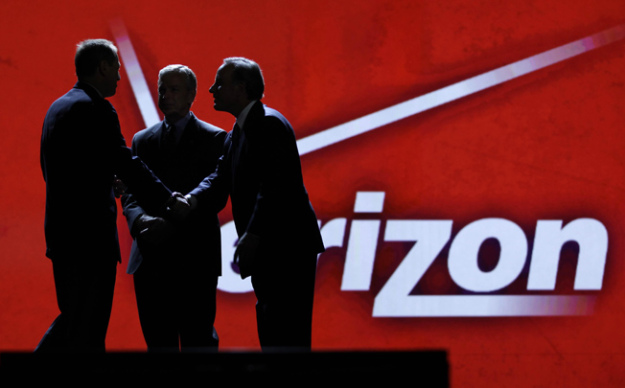Verizon Wireless has confirmed a report that it will begin slowing down the data speeds for its most active 4G LTE customers with unlimited data plans starting this October.
The “throttling,” if you will, kicks in when said customer has surpassed a predetermined amount of data usage for the month, and is trying to draw more data whilst connected to a congested cell site. When this scenario occurs, the user will experience slower service on his / her device.
Verizon explained that this decision is meant to ease the amount of data being drawn from cell sites overburdened with traffic, and that the plan itself has actually been in place since 2011, though it previously applied only to 3G users.
“Starting in October 2014, Verizon Wireless will extend its network optimization policy to the data users who: fall within the top 5 percent of data users on our network, have fulfilled their minimum contractual commitment, and are on unlimited plans using a 4G LTE device,” the Verizon announcement said. “They may experience slower data speeds when using certain high-bandwidth applications, such as streaming high-definition video or during real-time, online gaming, and only when connecting to a cell site when it is experiencing heavy demand.”
Customers who use more than 4.74GB of data per month are the “top 5 percent of data users” the company is referencing. In its FAQ section, Verizon explains that its slowing down of connection speeds for users who go over this amount of data draw isn’t exactly “throttling” per se; that’s because the company’s handicapping of the service doesn’t happen 100% of the time.
“No, this is not throttling,” Verizon states. “The difference between our Network Optimization practices and throttling is network intelligence. With throttling, your wireless data speed is reduced for your entire cycle, 100 percent of the time, no matter where you are. Network Optimization is based on the theory that all customers should have the best network possible, and if you’re not causing congestion for others, even if you are using a high amount of data, your connection speed should be as good as possible. So, if you’re in the top 5 percent of data users, your speed is reduced only when you are connected to a cell site experiencing high demand. Once you are no longer connected to a site experiencing high demand, your speed will return to normal. This could mean a matter of seconds or hours, depending on your location and time of day.”
Whether you agree with the company’s terminology or not, what’s interesting to note out of all this is that when the top 5% of data users connect to cell sites that are not congested, the data they’re using still counts toward the aforementioned 4.74-GB data cap. So, even though they have “unlimited data,” these users are now being ushered into a cap program regardless, complete with penalties should they exceed what the company views as an appropriate monthly data allowance.
Ultimately, the reason why Verizon is doing this is to make money. The company has been working for the past three years to get all of its customers under some form of data limit package. Despite all of their efforts, a recent survey found that around a fifth of Verizon Wireless customers still have an unlimited data plan. While that might sound like a lot, it also means that four-fifths of one of the nation’s largest wireless carriers is under some sort of data plan. This particular stat makes the company one of the most successful carriers when it comes to monetizing data caps, and this is proven by the fact that Verizon actually holds the top spot among all companies when it comes to charging the highest bills in the country.
“Throttling” or “network optimization” — this move is simply another shrewd step in Verizon’s long-term plan to have data caps on all of its users.

Story via arstechnica.com
Advertisement
Learn more about Electronic Products Magazine





